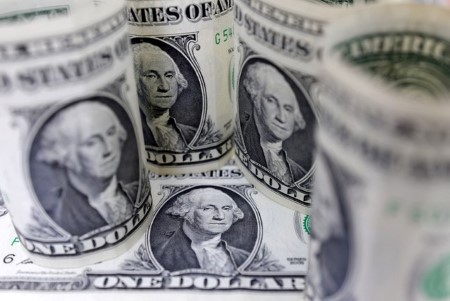




Philippines Trade Update: Trade trajectories trend along
 DOWNLOAD
DOWNLOAD

Policy Rate Updates: Double cut finale
 DOWNLOAD
DOWNLOAD

Monthly Economic Update: One for the road
 DOWNLOAD
DOWNLOAD


US yields rise further ahead of next week’s Fed meeting

WASHINGTON, March 15 – The benchmark US Treasury yield rose to its highest level in three weeks on Friday, as a mixed batch of data signaled a still-resilient economy, boosting expectations for fewer interest rate cuts by the Federal Reserve this year.
Benchmark 10-year notes’ yields were last up 1.4 basis points (bps) at 4.310%, their highest since Feb. 22. They are on track to post their largest weekly gain since mid-October at 21.8 bps.
US two-year yields were 3.9 bps higher at 4.730%, their highest since Feb. 26. Their weekly performance was the best since mid-January at 23.7 bps.
The two- and 10-year yields’ rise marks the fifth consecutive day of rising yields.
The US five-year note’s yield itself posted the biggest weekly gain since mid-May last year at 26.4 bps. It was last at 4.329%.
Friday’s US economic data showed US industrial production remained relatively flat in February, advancing only 0.1% from January, while manufacturing orders rose 0.8% in February after being revised down sharply in January. The cost of imported goods rose in February for the second month in a row.
Yields extended gains on this week’s news of higher-than-expected inflation. These include February’s consumer price index (CPI) on Tuesday, which rose 0.4%, largely driven by higher gasoline and shelter costs. Thursday’s producer price index (PPI) also exceeded forecasts, rising 0.6% in February versus 0.3% expected.
Traders in Fed funds futures reduced bets that the Fed will cut rates by June to 57.9%, from 62.5% on Thursday, according to the CME Group’s FedWatch tool. While the timing is in question, traders still see at least two rate cuts by the end of 2024.
The Fed is expected to hold rates steady when it meets next week, with the market focused on policymakers’ updated economic and interest rate projections.
“Everything is gradually coming in the direction that the Fed wants it to,” said Michael Lorizio, senior fixed income trader at Manulife Investment Management.
“Even though we did get some new information. I don’t think it’s really changed the landscape all that much, which has to do with the cumulative effect of data releases.”
The inversion in the yield curve between two-year and 10-year notes US2US10=TWEB widened slightly to minus 42.2 basis points from minus 40.7 basis points on Tuesday.
New consumer sentiment data from the University of Michigan showed sentiment for the US economy declined in February from January. This put a slight damper on Treasury yields’ rise, said Ian Lyngen, head of US rates strategy at BMO Capital Markets.
The survey showed inflation expectations over one year remained unchanged at 3%. But this increased to 2.7% from 2.4% over a three-year span, and to 2.9% from 2.5% over five years.
“Treasuries were weaker in the set-up to the University of Michigan print and since the data, we’ve seen yields partially retrace off the day’s peaks,” Lyngen wrote in a Friday note.
The yield on existing 30-year bonds remained relatively flat on the day on Friday at 4.433%. But they have posted their largest gain on the week since early February at 16.8 bps.
(Reporting by Matt Tracy in Washington; Editing by Richard Chang and Matthew Lewis)
This article originally appeared on reuters.com





 By Reuters
By Reuters